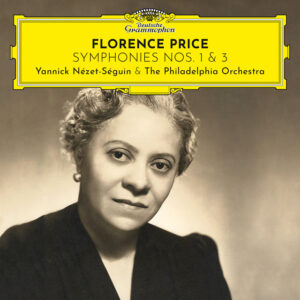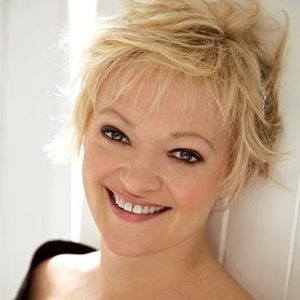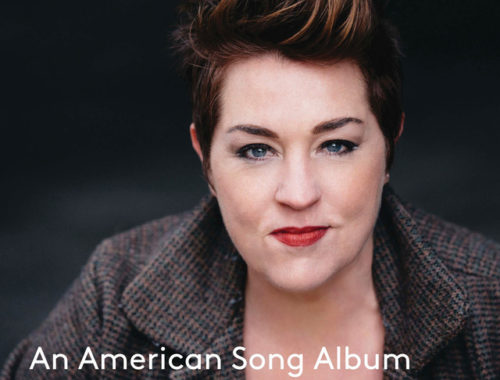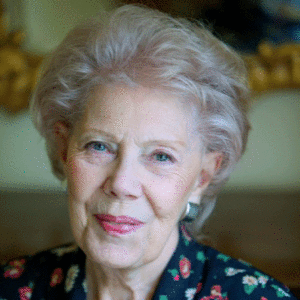GRAMOPHONE Review: Price Symphonies Nos. 1 & 3 – The Philadelphia Orchestra/Nézet-Séguin
 This has been a fascinating experience. I chose to come to this music – exhumed as it is from nearly a century of neglect – as new music. That’s how I wanted to hear it for the first time. I have only the bare outline of a backstory and the now familiar headline that Florence Price was the first black woman to have a symphony – her First in E minor – performed by a major American orchestra. I’ve even chosen not to read what I am sure is an illuminating feature by Andrew Farach-Colton the better to come to these symphonies with absolutely no preconceptions. And (this surprised even me) I was never for a moment able to second-guess them.
This has been a fascinating experience. I chose to come to this music – exhumed as it is from nearly a century of neglect – as new music. That’s how I wanted to hear it for the first time. I have only the bare outline of a backstory and the now familiar headline that Florence Price was the first black woman to have a symphony – her First in E minor – performed by a major American orchestra. I’ve even chosen not to read what I am sure is an illuminating feature by Andrew Farach-Colton the better to come to these symphonies with absolutely no preconceptions. And (this surprised even me) I was never for a moment able to second-guess them.
Actually even the dates are deceptive because Price’s music – despite obvious models like Dvorak’s ‘New World’ Symphony – is clearly in the business of bucking trends and seeing things from her own unique perspective. It is music of great honesty and truth, full of hurt and sorrow but equally a joyous awareness of the spirit driving the black experience in her time.
In the opening paragraph of the First Symphony in E minor my mind cast back to the Second Symphony of Charles Ives where European models like Dvorak and Brahms underpinned the emergent idiosyncrasies of the man and his musical ethos. Price sets out with a Dvorakian pastoral of sorts but one born and bred in the American Deep South. The second subject is infused with a homespun quality that in terms of authenticity makes even Dvorak sound like a tourist.
The underlying ache is inescapable. But so too is an original musical voice. Some of the harmony is very much her own as is her self evident delight in the melodic development where something as simple as offering the violas their moment in the sun can sound like a minor revelation. And who – not me – could have predicted the halting trumpet-led twist into the entirely unexpected coda where the threat, the uncertainty, is so disarming. This is the first but not the last time in either symphony that storm clouds roll in unpredictably.
But it’s the second movement Largo which immerses us for the first time in a music which resonates for the ages. This post-Mahlerian funeral procession which might not be out of place on the streets of New Orleans today is a trumpet and tenor-drum led oration which speaks of sorrow but more importantly of dignity and resolve. Price loves her brass chorales as we shall hear. But she also loves her Jubas with their jazzy strutting cakewalk manner and rhythms celebrating the body-slapping improvisations which so defiantly substituted for confiscated drums. She even throws in a slide-whistle to wilfully coarsen the joyful noise.
It has to be said at this point that Yannick Nézet-Séguin and his Philadelphia Orchestra are body and soul into joy and resolve of this music. Price can only of dreamed of performances like these, the fire, the spontaneity, the poetry of the many wind solos, the unapologetic tone which focuses not on neglect but discovery.
The weight of history bears down on the opening movement of the Third Symphony – another of Price’s signature brass chorales, ‘lest we forget’, morphing into a second subject in trumpet and trombone which wraps around you like a warm embrace. Again it’s the hope not the sorrow which holds sway. These are big moments where Price clearly feels the burden of the African-American experience but allows it to fuel her soul.
The simple and the homespun can grow mighty in her music. There is a quiet pride and majesty about it but equally an infectious joy in the unquenchable spirit of her brothers and sisters. Nézet-Séguin is clearly on a mission to convey that. It isn’t music that was ever going to change the world or indeed the American landscape as Ives and others did – but its honesty and emotional truth and exuberance makes it so much more than just a footnote. And if the world had been different back then, what then of Florence Price? What might have been? Plenty of clues here.
You May Also Like

A Conversation With MARIA FRIEDMAN
02/09/2011
GRAMOPHONE Review: An American Song Album – Melody Moore/Bradley Moore
14/08/2019

